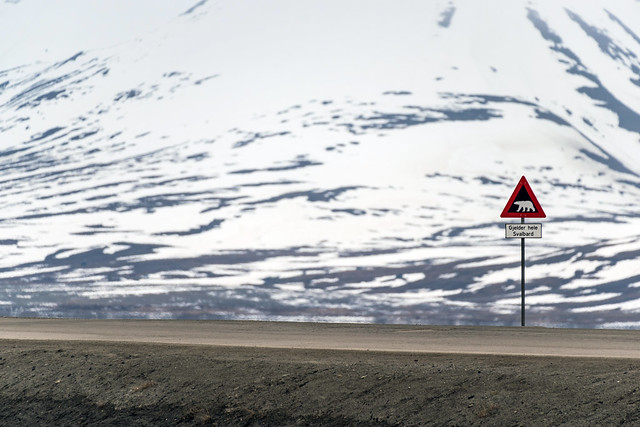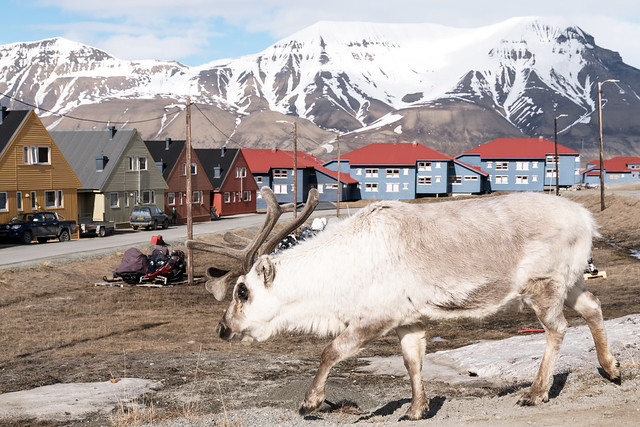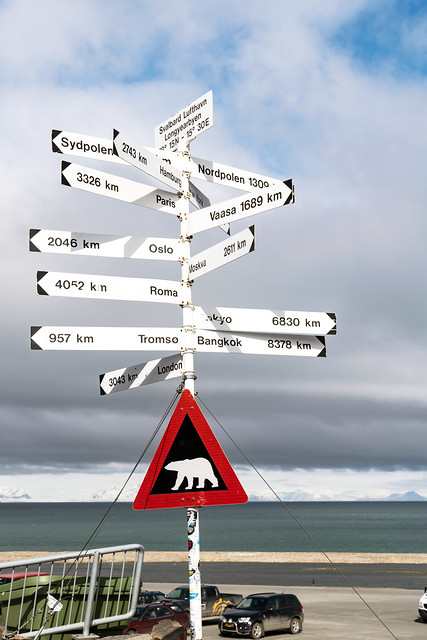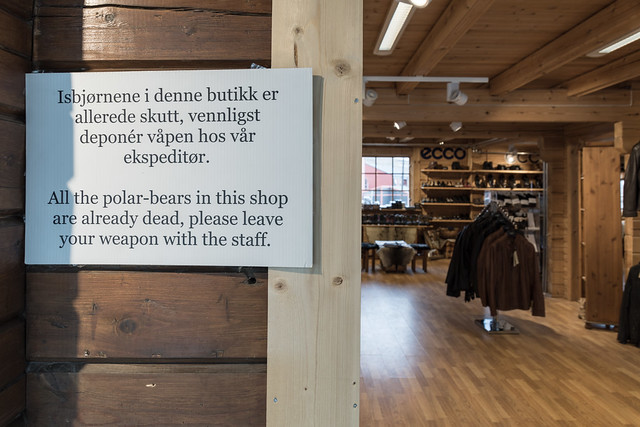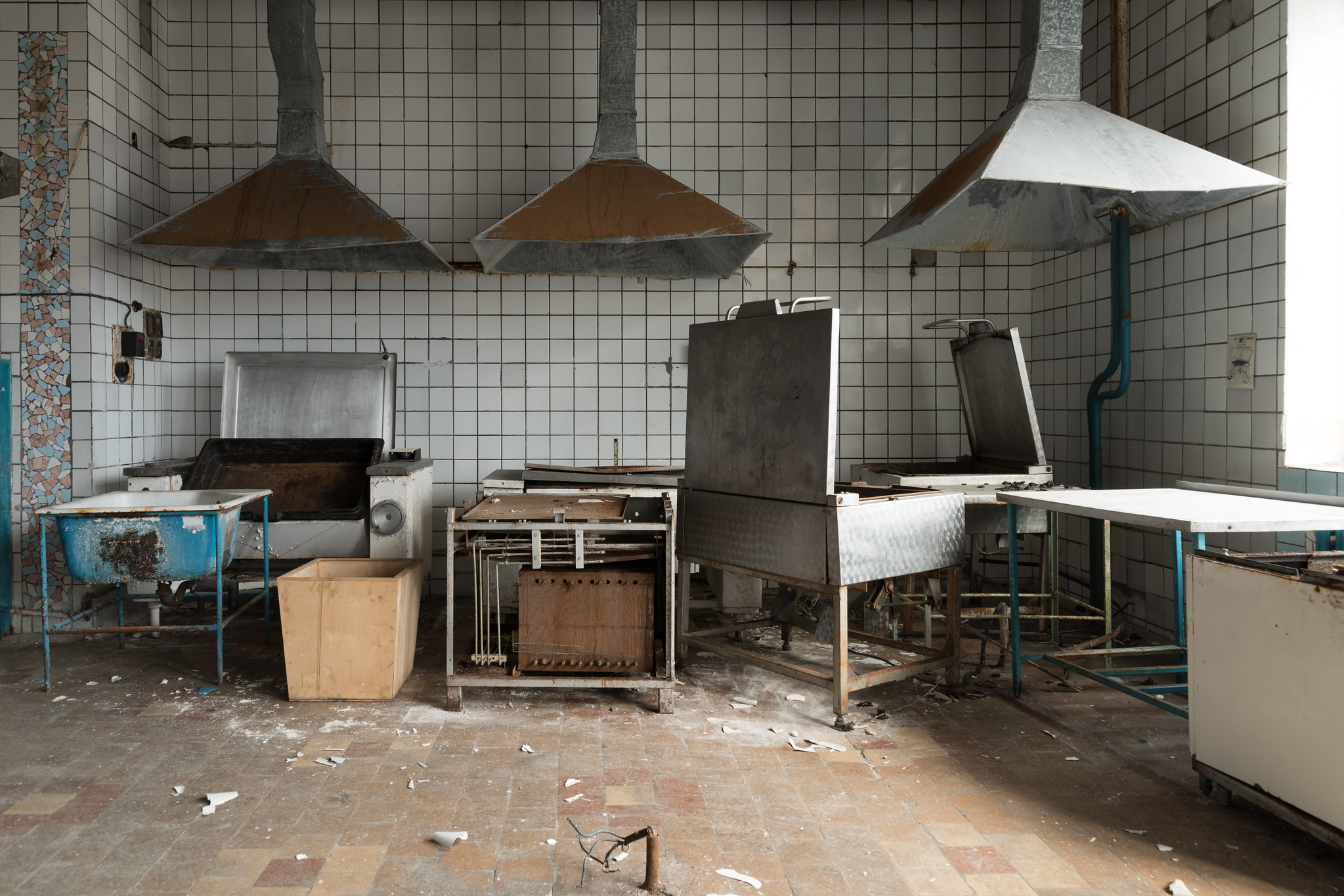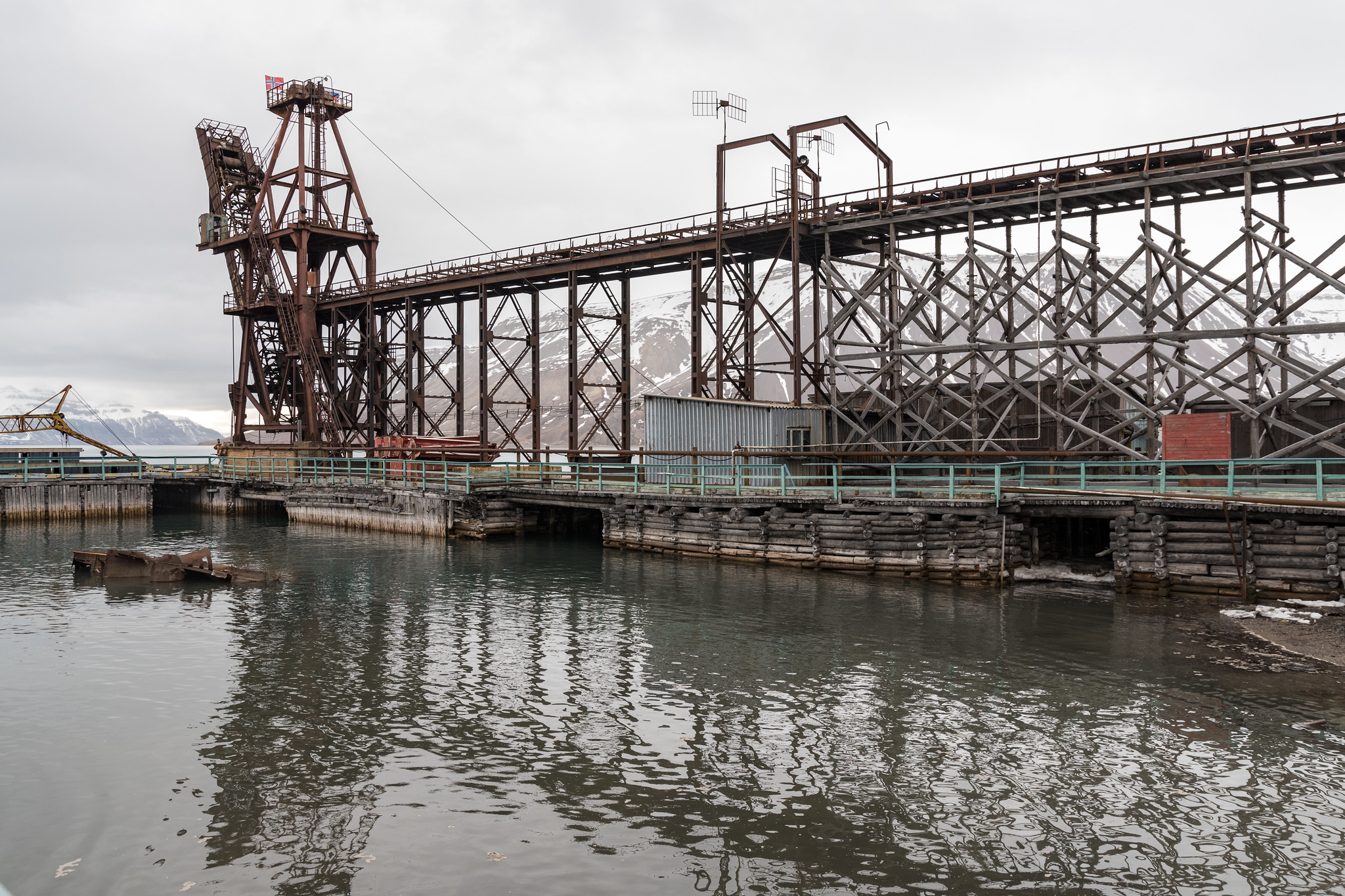In September 2016 we decided to visit this much discussed part of the world
to find out what the fuss is all about. We visited both South and North Korea (in
that order). This post is about the Northern part of the peninsula and the
South will follow soon.
How to travel to North Korea?
Travelling to North Korea in 2016 is unlike any other trip. From visas, to planning to getting there and leaving, everything is much different and I will get into all the details soon. The actual name of the country is DPRK (Democratic People’s Republic of Korea) and this is the only one being used inside the country.
I knew nothing when I started planning the trip in April 2016 so the natural
place to start is the North Korean embassy (yes there are a bunch of them in
European countries). So I sent an email to the one in Bern, Switzerland and a
very polite person replied that I need to plan a trip through a travel agency
attaching the list of ones in my country, the Netherlands. I contacted the
travel agencies to get prices and different itineraries. For the visa, we sent
the passports to the travel agency who forwarded them to the embassy in
Switzerland.
Travelling to North Korea is very expensive although, all meals, entrances
to sights, transportation and hotels are pre-paid as we were not allowed to use
the local currency. Euro, Chinese RMB and dollar are widely accepted and you
will need some for water, some extra meals or to buy souvenirs. We spent
more money in N.Korea for 5 days than in the South for 10 days. Talking to
some fellow travelers we met in hotels, we were told that they planned the trip
through Chinese travel agencies for much less than we did but then it
requires more research and it is probably riskier. To be honest, the experience
was well worth the money.
There are only two ways to reach N.Korea for Westerners and both are from China. One is to take the
train from Beijing or the border town of Dandong and the other is plane from Beijing. Both options will take you only to Pyongyang, the capital. We chose to go by train from Dandong and fly to Beijing with the North Korean carrier, Air Koryo. More on those later.
When in the country, you will have two guides and a driver who are
responsible for you, they will be your best pals, show you around, tell you
what you can do and what you cannot do, where to go and where not to go, what
to take picture of and what not. They are the ones who will make your trip
either fun or miserable so better be good and most important listen to them.
They will be 24/7 with you, staying in the same hotels and sometimes eat
with you. What I found interesting is that every tourist (or group) is assigned
two guides because they have to check on each other so one does not become
curious about capitalism or western societies and start asking questions (!).
Few things about travelling to N.Korea
Because of what it is, travelling to North Korea is a unique experience. You get a glimpse of how a Stalinist state actually is in the 21th century. Combined with a trip to the South you will get to understand how a single nation can grow so much apart in just 60 years in different conditions. Much as their southern brothers North Koreans are very friendly and kind people and everyone will make sure you have a great stay (provided all the limitations).
When visiting N.Korea you have to be prepared to bow 5 times per day to pictures, statues and
paintings of the deceased leaders, Kim Il-sung and
Kim Jong-il (the current one, Kim Jong-un, is too "humble"
to have a statue, painting or picture). Of course you will get a lot of
propaganda but you will quickly get used to it.
There have been stories of tourists detained in the country (most recently Otto Fredrick Warmbier) but if you follow the rules and not act stupidly you will not have any issues at all. Your travel agency will brief you on what you can and cannot do, your guides will make sure you know the rules and it is up to you to follow them. If you plan to make fun of the state or sneak pictures better think twice because the North Koreans will not.
Getting in
The route to Pyongyang is around 5hours and from the train I got the first
glimpse of North Korea. The landscape is truly unique with many rice
fields. The people are visibly poor and the infrastructure old and inadequate.
For hundreds of kilometers in the country, I would spot only trucks and buses
with a cloud of dirt behind them showing the lack of paved roads. It was very
sad, considering the leaders of this country are spending billions on nuclear
weapons.
Getting out
Getting out of the country is far less complicated. We flew with Air Koryo, the N.Korean national carrier. Voted as the world’s worst airliner, it was far from that. The plane was Russian made Tupolev Tu-204 as Boeing and Airbus are not allowed to sell airplanes to N.Korea. It looked modern and clean and the stewardesses could speak good English. A fellow European passenger tried to take a picture of one of them and when she realized, she kindly asked him to delete it. We were served drinks (much like any other flight) and a burger.
The Pyongyang airport is modern, clean and spacious. We were expecting for
someone to search our backpacks, suitcases and cameras but nothing of that
happens! What was abit awkward is that the electronic board with departures for
that day, had only 1 entry, our flight to Beijing. Guess if you miss that one
you are stuck.
Pyongyang
The capital of N.Korea is a city of 3 million people. This was our base and the town we spent 4 out of 5 nights of the trip. There are only 2 hotels available for foreigners so you will either stay in Koryo hotel or the Yanggakdo International Hotel. We stayed in the Koryo.
There are many things to see in Pyongyang but unfortunately we got to go
only where our guides wanted us to go. I wish I was able to walk around walking
in the city. Anyway, these are the some of the places we visited:
Pyongyang metro:
For many years this was one of the few things I knew about N.Korea. According
to this page some of the trains in the Pyongyang metro came from the Athens metro. As a kid,
riding the metro was something I loved so my father used to take me often. For
a short period of time, around 1982, some fancy yellow trains were used and
they were my favorite. After a short period they disappeared and I was always
wondering what happened to them. Many years later I found that they had ended
in Pyongyang and you can imagine my happiness that this childhood mystery was
solved! Those specific trains don’t run in the Pyongyang metro anymore but I
spotted a couple of them on some stations when coming from Dandong. They were
painted blue and fitted with electrical aerials.
The metro is soviet style inspired with chandeliers, paintings and large stations. N.Koreans claim that it is the world’s deepest, dug over 100m below the surface. It serves as a bunker in case of war. Like most of the tourists we saw only two stations.
The metro has 2 lines, each of them having 8 stations. Our guides asked us about the metro in Athens
and they were quite
surprised when we told them that it has 3 lines and around 60 stations. I could
not dare telling them about the Seoul metro that has 19 lines.
Cycling in Pyongyang: This was probably one of the best experiences in Pyongyang. Living in Amsterdam, we love cycling. When in N.Korea we were not allowed to walk around freely and always moved around in a van. To be able to cycle in the streets like the locals do, even if only for 7km, was a fantastic experience. We got to see the city closer, listen to the noise, feel the vibe and be free (still with a guide cycling with us). Loved it!
Korea Central Zoo: The zoo is located in the outskirts of Pyongyang and it was not in the foreign
tourist path. One of our guides, worked there and she was very proud of
the work she has done so when she asked us if we wanted to visit, we gladly
did. I had read reports about how bad the conditions are in there and I was
pleasantly surprised to find that it was clean, spacious and modern. The
animals lived in pretty much the same conditions as the zoos I have seen in
Europe. Our guide kept telling us how bad the international sanctions are for
the zoo as they could not exchange knowledge with other international
institutions. And I can imagine that this is true for many aspects of the
Korean life which is sad as common, peaceful, folks have nothing to blame.
Still, the zoo has had a lot of knowledge exchange with Skansen in Stockholm
(one of my favorites!) and there is even a part of the Pyongyang zoo named
after Skansen! A small Stockholm in Pyongyang.
Mangyongdae Children's Palace: This is kind of after school activities place for children. They can learn how to code, learn various musical instruments, calligraphy, ballet etc. Apart from visiting all
the different study rooms, we
got to see in a large auditorium a 1hr performance, together with all the other
tourists in Pyongyang. Some kids had really good talent there.
Kim Il-sung Square: Right in the center of Pyongyang, this is the place where all the military parades take place so you have probably seen it on TV. Modeled after Tiananmen in Beijing, it is used for the same purposes. It is surrounded by important buildings, like the ministry of foreign affairs, the Grand People's Study House and a folk museum. Worth visiting at night when all the lights are on.
Tower of Juche
idea: Built in 1982, on the banks of Tadong river, to celebrate the 70th
birthday of Juche (meaning self-reliance)
ideology. For 5 euros we could take the elevator to the top, where
we could enjoy nice view of Pyongyang 150m above the ground.
Kim Il-Sung. It is named after the
Kaesong and the DMZ
Around 160km south of Pyongyang lies Kaesong, a historical town. The Korean Demilitarized zone
(DMZ) is only a
few kilometers away. Roughly running along the 38th parallel, it is
the border of North and South Korea. All tourist packages include either a
daily visit or overnight stay in Kaesong. We chose to stay overnight.
The drive to Kaesong is on a very bad and almost empty highway. We counted 5 military blocks where we had to stop on each and every one to present a permit to move further. I could not stop thinking how difficult it must be for locals to travel within their own country.
In Kaesong we spent the night on a very simple but clean hotel. We had the chance to meet 2 American doctors, who were there on a Red Cross mission to help set up a (solar powered) hepatitis lab. One of them had visited North Korea in similar missions around 25 times (!). He told us that the situation in the local hospital is very bad and doctors have no way to diagnose the different types of hepatitis. They mentioned the shocking fact that the hospital receives 2 hours of electricity PER MONTH. In high contrast, the lights on our hotel were always on. As we suspected, we were told that hospital for party members in Pyongyang are equipped to western standards.
Visiting the DMZ, includes a stop to
the Panmunjom village where the armistice treaty was signed between the North
Koreans and the UN forces. Sadly the South Koreans refused to participate and up
to this day, no peace treaty has been signed. Next stop was the Joint SecurityArea (JSA) where occasional talks are being held between the two Koreas. It is
a set of buildings right on the border with North and South Korean soldiers on
each side.
Worth mentioning that on that day I wore a T-Shirt writing some words in English among them was “New York”. This was totally unintended and when the military officer who was leading the tour noticed that, he told our guides that this is provocative and I should not wear shirts like that. In order not to further irritate him, I wore the shirt inside out for the rest of the visit!
In the JSA, we were shown a signature of Kim Il-sung. The story goes that this is his last one, few days before he died. Also, right before his death, he had reviewed and signed a bunch of documents about the reunification of the two Koreas. And right before it happened he died. And since 1994 no one cared to pick it up…
Also in Kaesong are 2 UNESCO World heritage monuments which we visited. First was the tomb of King Kongmin,
an
important figure of the Koryo dynasty. The tombs are located on a beautiful
hill, far away from any civilization so it was very relieving to be away from
all the slogans, the pictures of Kim dynasty members and the stories about the
greatness of the leaders. Next was Songgyungwan, a higher educational
institute, also during the Koryo and Choson dynasties.
International Friendship Exhibition and the Pohyonsa temple
In Korea it is a custom to exchange presents in every occasion. So when businessmen sign a deal,
they exchange
small presents. When a foreign delegate visits the country, they bring a nice
present. In that case Kim Il-Sung and Kim Jong-Il, during their time as
presidents they received thousands of those, so why not build a museum was
built to display them and show how much are leaders were loved by foreign
countries? This is the International Friendship exhibition, a massive 150 room
windowless building, build in the Myonhyang mountains, 160km north of
Pyongyang.
According to our guide, the museums has around 140.000 items from all the countries in the world. They are grouped per continent and country. We asked to see the European section. It was fun to see presents from Greek political parties, Dutch organizations and Swedish-Korean friendship organizations. No pictures were allowed so among all the exhibits, I remember some basket balls, an iPad and a whole airplane given as a present from Stalin.
In the museum there are 3 different rooms with wooden statues of Kim Il-Sung, Kim Jong-Suk his wife and mother of Kim Jong-Il, and Kim Jong-Il. We had to pay respect to each one of them (by bowing) but what I noticed is that the guides would walk backwards in those rooms so to not turn their backs to the statues!
A stone throw away from the International Friendship exhibition is the beautiful Buddhist temple of
Pohyonsa. Heavily damaged by the Americans during the war, it was
re-constructed to its original state. We were shown around while listen to
propaganda how N.Korea promotes freedom of religion from everyone. The truth is
that the constitution promotes freedom of religion but since it contradicts the
target of building socialism, it is not practiced. I read there is a Christian
church in Pyongyang but only foreigners are allowed to attend.
Anyway, back to Pohyonsa, we got to meet some Buddhist monks. I got the feeling that they were not real monks and were just working there just to get tourist money (we were told how many people from around the world visit the temple and pay respect by donating money…).
My impressions of the trip to N.Korea
My impressions of N.Korea are along my expectations. Of course it is much different reading about a place and visiting one. I got the feeling that people are very scared and struggle too much for their every day life. I had no way to participate to any conversations and all the information came through our guides.
A tourist visit is tailored so us foreigners get only to see the best of the country. There is much good to it but I was wondering if most locals ever get to live as we lived. The food was always nice and more than we could eat (and I am a big guy!), the hotels were nice, the sights were tidy. But how are the homes of people, how is life far away from the capital, how is the education? We turned on the TV and what we got was steel production, missiles being fired and military parades. It was all in Korean so no clue what it was about.
All the locals we interacted with, even the ones that did not speak a word in English, visibly tried their best to make our stay as pleasant as possible. And they were not forced, it was genuine. Like South Koreans, people are kind and proud of their country. And I also got the feeling that they know it is a mess and they are embarrassed, so since we are honored guests they want to show us only the best of it.
My only thought of this country is about the N.Korean who is deprived of even the most simple freedoms like the ability to travel between one part of their country to the other. They certainly do not deserve this. It might be difficult and complicated but I wish that soon the two Koreas unite again. And then I want to return to the one Korea and meet again those people who will be free and can dream of a better future.
How to travel to North Korea?
Travelling to North Korea in 2016 is unlike any other trip. From visas, to planning to getting there and leaving, everything is much different and I will get into all the details soon. The actual name of the country is DPRK (Democratic People’s Republic of Korea) and this is the only one being used inside the country.
 |
| Socialist realism in Mansu Hill Grand Monument |
 |
| Tower of Juche idea |
There are only two ways to reach N.Korea for Westerners and both are from China. One is to take the
train from Beijing or the border town of Dandong and the other is plane from Beijing. Both options will take you only to Pyongyang, the capital. We chose to go by train from Dandong and fly to Beijing with the North Korean carrier, Air Koryo. More on those later.
 |
| Monument to People's party founding |
Few things about travelling to N.Korea
Because of what it is, travelling to North Korea is a unique experience. You get a glimpse of how a Stalinist state actually is in the 21th century. Combined with a trip to the South you will get to understand how a single nation can grow so much apart in just 60 years in different conditions. Much as their southern brothers North Koreans are very friendly and kind people and everyone will make sure you have a great stay (provided all the limitations).
When visiting N.Korea you have to be prepared to bow 5 times per day to pictures, statues and
 |
| Kim Il-Sung and Kim Jong-Il pictures everywhere |
There have been stories of tourists detained in the country (most recently Otto Fredrick Warmbier) but if you follow the rules and not act stupidly you will not have any issues at all. Your travel agency will brief you on what you can and cannot do, your guides will make sure you know the rules and it is up to you to follow them. If you plan to make fun of the state or sneak pictures better think twice because the North Koreans will not.
Getting in
Our trip started on the Chinese town of Dandong, just on the border with N.Korea. There we took the train that would take us to Pyongyang. The train starts from Dandong and after crossing the Yalu river, reaches the station of Sinuiju where it stops for a 2hr inspection. Army officers come onboard the train, take all passports and search everything and everyone. For some reason my suitcase was not searched but the officers went crazy on my backpack. They took the North Korea travel guide and were really upset about the TomTom GPS watch but they still let me have it. What was really impressive is that they took all the hangers from the suitcase of a fellow Korean traveler. No clue why!
Getting out
Getting out of the country is far less complicated. We flew with Air Koryo, the N.Korean national carrier. Voted as the world’s worst airliner, it was far from that. The plane was Russian made Tupolev Tu-204 as Boeing and Airbus are not allowed to sell airplanes to N.Korea. It looked modern and clean and the stewardesses could speak good English. A fellow European passenger tried to take a picture of one of them and when she realized, she kindly asked him to delete it. We were served drinks (much like any other flight) and a burger.
 |
| Air Koryo Tu-204 |
Pyongyang
The capital of N.Korea is a city of 3 million people. This was our base and the town we spent 4 out of 5 nights of the trip. There are only 2 hotels available for foreigners so you will either stay in Koryo hotel or the Yanggakdo International Hotel. We stayed in the Koryo.
 |
| Pyongyang |
Mansu Hill Grand
Monument: This is the first stop of our tour and the place we were
introduced to
bowing to the leaders. It is a complex of many monuments, with
the center of it being two massive bronze and really important statues of Kim
Il-Sung and Kim Jong-Il, 22 meters tall each. We had to present flowers and
perform a deep bow. Around the statues are 2 revolutionary monuments, one
celebrating the Anti-Japanese struggle and the other Socialist revolution.
What was surprising is that nearby the statue was a road and when cars pass-by, they reduce speed! When leaving this place, I wanted to drink some water so I opened my bag and took my bottle out when our guides told me that I should not drink now and do that later. I was probably too close to the statues...
 |
| Kim Il-Sung and Kim Jong-Il statues |
What was surprising is that nearby the statue was a road and when cars pass-by, they reduce speed! When leaving this place, I wanted to drink some water so I opened my bag and took my bottle out when our guides told me that I should not drink now and do that later. I was probably too close to the statues...
Grand People's
Study House: As the name implies, this is a library but also a place where
N.Koreans can study various topics. It is built in traditional Korean
architecture in the very center of Pyongyang. We were shown rooms where
students learned how to use computers (Windows XP!), German, English etc.
The highlight in that tour was the music room. Large room with cassette and CD players where students could get to listen music from around the world. The lady working there, when she found out we were Greeks she searched and found a tape with Greek music which she played for us. It was a very old song but still very touching to listen to music from our country in North Korea J
 |
| In Grand People's Study house |
The highlight in that tour was the music room. Large room with cassette and CD players where students could get to listen music from around the world. The lady working there, when she found out we were Greeks she searched and found a tape with Greek music which she played for us. It was a very old song but still very touching to listen to music from our country in North Korea J
Victorious War
Museum: This is a massive museum which tells the Korean War story from the
N.Korean point of view. Upon arrival, a military officer shows us around and
explains the artifacts. In our case it was a lovely lady, both funny and kind.
Most of the artifacts we were shown, were captured American weapons from the
period during and after the war (from planes to helicopters and guns). The
highlight is the USS
Pueblo, which was captured venturing into N.Korean waters in January 1968.
We were shown around and forcibly asked to take pictures.
What I will remember from this museum is how cold it was inside. Beautiful warm summer day outside and freezing temperatures inside. And lots of details how N.Koreans fought bravely the American imperialists. And a lot of emphasis on how the Americans bombed innocent Korean civilians (which is partially true).
 |
| War museum |
What I will remember from this museum is how cold it was inside. Beautiful warm summer day outside and freezing temperatures inside. And lots of details how N.Koreans fought bravely the American imperialists. And a lot of emphasis on how the Americans bombed innocent Korean civilians (which is partially true).
Monument to
Party Founding: This monument is dedicated to the 50 years of the founding
of the
Worker’s party of Korea. And
because of that it is 50m high. The hammer, sickle and calligraphy brush
symbolize the workers, farmers and intellectuals. It is one of the communist
symbols that are a must see.
 |
| Taking a picture in front |
 |
| Pyongyagn metro |
The metro is soviet style inspired with chandeliers, paintings and large stations. N.Koreans claim that it is the world’s deepest, dug over 100m below the surface. It serves as a bunker in case of war. Like most of the tourists we saw only two stations.
The metro has 2 lines, each of them having 8 stations. Our guides asked us about the metro in Athens
 |
| Reading the news in the metro |
Cycling in Pyongyang: This was probably one of the best experiences in Pyongyang. Living in Amsterdam, we love cycling. When in N.Korea we were not allowed to walk around freely and always moved around in a van. To be able to cycle in the streets like the locals do, even if only for 7km, was a fantastic experience. We got to see the city closer, listen to the noise, feel the vibe and be free (still with a guide cycling with us). Loved it!
Korea Central Zoo: The zoo is located in the outskirts of Pyongyang and it was not in the foreign
 |
| Entrance to Pyongyang zoo |
Mangyongdae Children's Palace: This is kind of after school activities place for children. They can learn how to code, learn various musical instruments, calligraphy, ballet etc. Apart from visiting all
 |
| Playing the accordion |
Kim Il-sung Square: Right in the center of Pyongyang, this is the place where all the military parades take place so you have probably seen it on TV. Modeled after Tiananmen in Beijing, it is used for the same purposes. It is surrounded by important buildings, like the ministry of foreign affairs, the Grand People's Study House and a folk museum. Worth visiting at night when all the lights are on.
 |
| Tower of Juche idea and women with Korean dresses |
Kim Il-Sung. It is named after the
Kaesong and the DMZ
Around 160km south of Pyongyang lies Kaesong, a historical town. The Korean Demilitarized zone
 |
| DMZ visit briefing |
The drive to Kaesong is on a very bad and almost empty highway. We counted 5 military blocks where we had to stop on each and every one to present a permit to move further. I could not stop thinking how difficult it must be for locals to travel within their own country.
In Kaesong we spent the night on a very simple but clean hotel. We had the chance to meet 2 American doctors, who were there on a Red Cross mission to help set up a (solar powered) hepatitis lab. One of them had visited North Korea in similar missions around 25 times (!). He told us that the situation in the local hospital is very bad and doctors have no way to diagnose the different types of hepatitis. They mentioned the shocking fact that the hospital receives 2 hours of electricity PER MONTH. In high contrast, the lights on our hotel were always on. As we suspected, we were told that hospital for party members in Pyongyang are equipped to western standards.
 |
| Joint Security Area (on the back is South Korea) |
Worth mentioning that on that day I wore a T-Shirt writing some words in English among them was “New York”. This was totally unintended and when the military officer who was leading the tour noticed that, he told our guides that this is provocative and I should not wear shirts like that. In order not to further irritate him, I wore the shirt inside out for the rest of the visit!
In the JSA, we were shown a signature of Kim Il-sung. The story goes that this is his last one, few days before he died. Also, right before his death, he had reviewed and signed a bunch of documents about the reunification of the two Koreas. And right before it happened he died. And since 1994 no one cared to pick it up…
Also in Kaesong are 2 UNESCO World heritage monuments which we visited. First was the tomb of King Kongmin,
 |
| Tomb of King Kongmin |
International Friendship Exhibition and the Pohyonsa temple
In Korea it is a custom to exchange presents in every occasion. So when businessmen sign a deal,
 |
| International friendship exhibition and Myonhyang mountains |
According to our guide, the museums has around 140.000 items from all the countries in the world. They are grouped per continent and country. We asked to see the European section. It was fun to see presents from Greek political parties, Dutch organizations and Swedish-Korean friendship organizations. No pictures were allowed so among all the exhibits, I remember some basket balls, an iPad and a whole airplane given as a present from Stalin.
In the museum there are 3 different rooms with wooden statues of Kim Il-Sung, Kim Jong-Suk his wife and mother of Kim Jong-Il, and Kim Jong-Il. We had to pay respect to each one of them (by bowing) but what I noticed is that the guides would walk backwards in those rooms so to not turn their backs to the statues!
A stone throw away from the International Friendship exhibition is the beautiful Buddhist temple of
 |
| Pohyonsa temple |
Anyway, back to Pohyonsa, we got to meet some Buddhist monks. I got the feeling that they were not real monks and were just working there just to get tourist money (we were told how many people from around the world visit the temple and pay respect by donating money…).
My impressions of the trip to N.Korea
My impressions of N.Korea are along my expectations. Of course it is much different reading about a place and visiting one. I got the feeling that people are very scared and struggle too much for their every day life. I had no way to participate to any conversations and all the information came through our guides.
 |
| Korean delicacies |
All the locals we interacted with, even the ones that did not speak a word in English, visibly tried their best to make our stay as pleasant as possible. And they were not forced, it was genuine. Like South Koreans, people are kind and proud of their country. And I also got the feeling that they know it is a mess and they are embarrassed, so since we are honored guests they want to show us only the best of it.
My only thought of this country is about the N.Korean who is deprived of even the most simple freedoms like the ability to travel between one part of their country to the other. They certainly do not deserve this. It might be difficult and complicated but I wish that soon the two Koreas unite again. And then I want to return to the one Korea and meet again those people who will be free and can dream of a better future.
For more pics, please visit my flickr page: https://goo.gl/0XcG6Q
